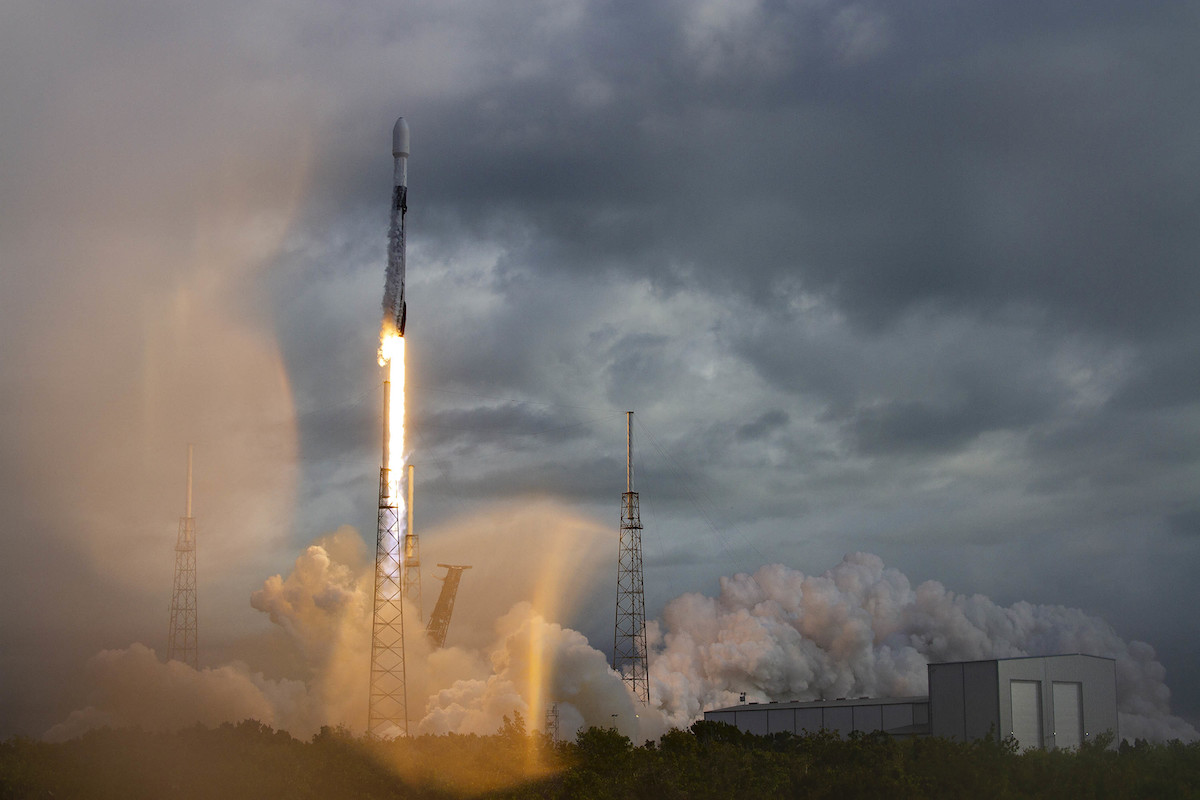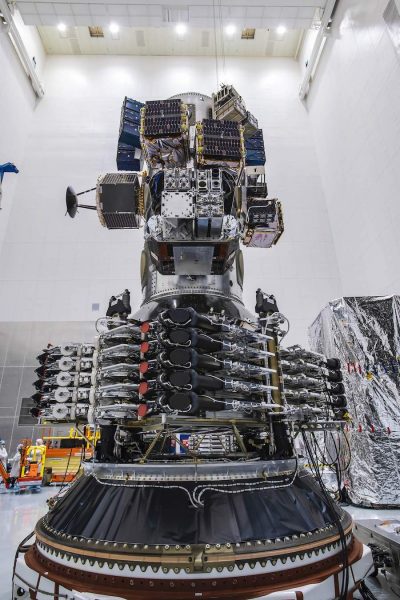SpaceX smashes Indian record with launch of 143 small satellites
USA KO's INDIA: But Speed Record of 104 satellites launched in 11 minutes still with India's ISRO
 NepalPress
NepalPress

SpaceX launched a Falcon 9 rocket Sunday from Cape Canaveral with 143 small satellites, a record number of spacecraft on a single mission, giving a boost to startup space companies and stressing the U.S. military’s tracking network charged with sorting out the locations of all objects in orbit.
The 143 small spacecraft, part of SpaceX’s “Transporter-1” rideshare mission, took off from pad 40 at Cape Canaveral Space Force Station at 10 a.m. EST (1500 GMT), a day after thick cloud cover prevented the rocket from leaving Earth.
The 229-foot-tall (70-meter) Falcon 9 rocket soared toward the southeast from the launch pad at Cape Canaveral, then vectored its thrust to fly on a coast-hugging trajectory toward South Florida, before flying over Cuba, the Caribbean Sea, and Central America.
The unusual trajectory was similar to the track followed by a Falcon 9 launch in August 2020, which was the first launch since the 1960s from Florida’s Space Coast to head into a polar orbit.
The Falcon 9’s reusable first-stage booster — flying for the fifth time — landed on SpaceX’s “Of Course I Still Love You” drone ship in the Atlantic Ocean southeast of Miami nearly 10 minutes after liftoff. SpaceX said it also retrieved the rocket’s payload fairing halves after they parachuted back to Earth in the Atlantic.
The rocket’s second stage powered into orbit with its 143 satellite passengers, flew over Antarctica, then briefly reignited its engine while heading north over the Indian Ocean.
THE PREVIOUS RECORD WAS HELD BY INDIA
PSLV-C37 was launched by India’s Space Research Organisation (ISRO) from the First Launch Pad of Satish Dhawan Space Centre in Sriharikota at 09:28 IST on 15 February 2017. It was the 39th flight of the PSLV and the sixteenth in the XL configuration. It carried a total of 104 satellites including the primary payload Cartosat-2D. The launcher started placing the satellites into polar Sun-synchronous orbits one after another after a flight of 16 minutes and 48 seconds. It first ejected the satellite Cartosat-2D at an altitude of approximately 510 kilometres (320 mi), with 97.46 degrees inclination, followed by the two ISRO nanosatellites INS-1A and INS-1B. It then took 11 minutes for PSLV C-37 to place the remaining 101 “co-passenger” satellites into their intended orbits.
SATELLITE CUSTOMERS OF SPACEX

The launch Sunday carried payloads for Planet, Swarm Technologies, Kepler Communications, Spire, Capella Space, ICEYE, NASA, and a host of other customers from 11 countries. The payloads ranged in size from CubeSats to microsatellites weighing several hundred pounds.
The Falcon 9 rocket will also delivered 10 more of SpaceX’s Starlink internet satellites into space, the first Starlink craft to head for a polar orbit.
SpaceX aimed to placed the satellites into an orbit roughly 326 miles (525 kilometers) in altitude, with an inclination of 97.5 degrees to the equator. The company confirmed an on-target orbital injection after the second burn of the Falcon 9’s upper stage engine, setting the stage for a carefully-choreographed payload deployment sequence that took more than a half-hour to complete.














